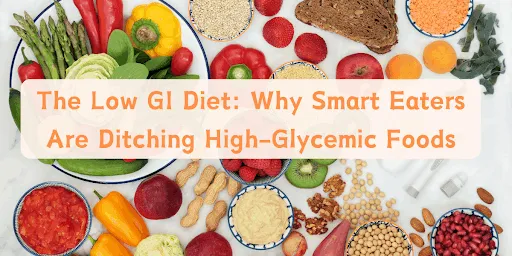The process of changing genes has an extended history. In 1946, scientists established an instrument to move DNA from a single organism to others. This might seem harsh, nevertheless, it happens naturally in numerous biological procedures, including when certain microbes develop resistance to antibiotics.
Let us move ahead to 1983. That was the first occasion we observed a genetically engineered, antibiotic-resistant cannabis plant. It was a necessary move forward. China created virus-resistant tobacco. The United States of America followed suit in 1994, allowing customers to buy the Flavr Savr tomato, which is intended to keep fresher for longer after having picked. Over time, we have created GM crops that might withstand herbicides, insects, and severe weather conditions.
Some GM crops additionally contain additional nutrients which aid people in regions where sustenance is limited.
What are bioengineered food ingredients?
Bioengineered or genetically engineered food ingredients refer to agricultural products that have had their DNA altered through genetic engineering techniques. Here are some key points about bioengineered food ingredients:
- Genetic Modification Process: Bioengineering allows the modification of food crops by inserting genes from other organisms. For example, genes from a bacterium may be added to corn to make it resistant to pests.
- Common Genetically Engineered Crops: The most common genetically engineered crops include corn, soybeans, cotton, canola, sugar beets, alfalfa, and papaya. Many processed foods contain ingredients derived from these genetically engineered crops.
- Modification Goals: Common modifications include resistance to herbicides, viruses, insects, or disease, delayed ripening, increased nutritional value, or the ability to tolerate environmental conditions.
- Controversial Nature: Research says bioengineered food ingredients are controversial due to concerns about potential risks such as allergic reactions, gene transfer to other organisms, or impacts on ecosystems. Long-term human health effects are still being researched.
- FDA Regulations: In the U.S., FDA regulations state that genetically engineered foods are generally recognized as safe if they are substantially equivalent to their non-genetically engineered counterparts. Labels are not required unless the food is significantly different.
- Global Labeling Debates: Many countries require labeling of genetically engineered foods to allow consumers to make informed choices. Debates continue over whether these labels should be mandatory.
What is the purpose of bioengineered food?
The benefits of GMO shreds light upon longer shelf life and reduced cost. Many nutritionists target Bioengineered Foods as these are considered utmost nutritious. In addition, you are access to foods with more desirable traits just like potato which has the least cancer-causing ability even when fried.
However, GMO plants are made such that they attract fewer pests and insects. Apparently, research saysglobal pesticides has gone down by 8.3% due to the introduction of GMO technology.Furthermore, they are made compatible to survive in stressful situations aswell.
Benefits of GM foods
- Particular crops can be manipulated genetically to produce less allergens. This suggests that individuals who are sensitive might react strongly to these altered meals, which makes them safer to eat, particularly for those who have food allergies.
- Many plants have been modified genetically to grow more quickly and effectively. This quick growth is a significant advantage, especially in an atmosphere where the number of people is continuously increasing. It helps to have an increasing and more plentiful food supply, satisfying the increasing requirements of human beings in general and the global population.
- The United States currently leads the way in the production of genetically engineered crops. Bioengineered crops include cotton, soybeans, canola, potato eggplants, berries, maize, tomato slices, lettuce, and watermelon.
- Scientists continue to examine how to manipulate DNA for various objectives, including facilitating the creation of novel medicines and advanced materials. Researchers still have much to learn about those genes that cause different characteristics.
How about digesting GM foods?
While GM crops are vital in farming, we rarely eat genetically modified animals. Instead, GM crops are used as ingredients in various cuisines. I was considering the impact of food that has been genetically modified.To assure food safety, scientists use methods like DNA microarrays and quantitative PCR (qPCR) to study the genetic makeup of GM crops. These methods identify GM products by searching for specific genetic markers. Many mechanisms of balance are in place to avoid incorrect outcomes.
The advantages and disadvantages of GM foods:
People have different views on crops that have been genetically engineered. Some see the benefits, while others worry about potential drawbacks.Advantages of genetically modified foods:
1. Reduced Allergies
Particular crops can be genetically engineered to produce fewer allergens. This implies that sensitive individuals may react significantly to these altered foods, rendering them safer for consumption, notably for those who suffer from food allergies.
2. Rapid Growth
Many plants with genetic modifications have been made to grow quicker and more effectively. This quicker development is a big advantage, especially in an atmosphere where individual numbers are continually rising. It helps to have an increasing and more abundant food supply, satisfying the increasing requirements of people in general and the world's population.
3. Addressing Dry Spells and Inadequate Soil
Some GM crops are designed to withstand difficult climatic circumstances, such as drought-prone locations and low-quality soil. This feature permits a more consistent food supply under less favorable settings.
4. Pharmaceutical Use Reduction
Genetically modified crops can be designed to evade pests, naturally reducing the requirement for chemical pesticides. This not only improves the environment for GMOs but also minimizes the use of dangerous chemicals and results in cleaner and safer food items.
5. More Nutrients
Genetic engineering may enhance the nutritional value of these crops. This is especially important in regions where dietary deficits are common. Genetically engineered foods can supply essential nutrients, aiding the fight against famine and other medical conditions.
6. Lengthier Shelf Life
Some foods with genetic engineering have a longer shelf life, encouraging them to stay fresher for longer. This can significantly minimize food waste by decreasing the amount of products that decay before utilization, contributing to environmentalism and resource conservation.
7. Tastier Food
There have been reports of foods that have been genetically modified to have superior flavor and quality. These taste enhancements can make meals more satisfying and rewarding, encouraging people to eat more nutritious meals.
What is bad about bioengineered food?
1. Unknown Health influences
One primary concern with food that has been genetically modified is the need for a long-term study on its impacts on human health. While these meals are subjected to safety evaluation, the potential dangers and consequences of consuming genetically modified goods over time are only partially recognized. This uncertainty can cause concerns, with some people fearing unintended health complications.
2. New Allergies
According to NIH, mutations in genes can sometimes introduce new proteins or sensitivities into GM crops. When genes from hazardous species are used, the modified food may contain such allergens. Individuals who mistakenly consume allergenic proteins may have allergic reactions.
3. Ethical considerations
Changes in live individuals' DNA composition raise ethical concerns. Some argue that tinkering with the fundamental components that constitute life raises ethical issues regarding the extent of human intervention in nature. This topic focuses on the moral, social, cultural, and philosophical aspects of altering genes, and viewpoints vary extensively.
4. Economic Impact
Genetic material from GM crops could damage non-GM crops or wild plants. This genetic escape may result in pollination or contamination, with unintended ecological ramifications. For example, the transmission of genes from GM crops to wild plants can produce difficult-to-control uperweeds or engineered traits that infect non-GM crops.
5. Trait Crossover
When particular genetic characteristics from GM crops merge with non-GM crops, it could create environmental concerns. For example, the transfer of herbicide-resistant attributes from GM crops to wild plants can result in the formation of herbicide-resistant superweeds that grow, which are impossible to control and may jeopardize ecosystems.
6. Making Sure GM Crops Are Safe
We need to ensure that GM crops are safe to consume. Safety inspections involve searching for allergies, investigating the effects of genetically engineered crops on humans and animals, and understanding how they influence the environment.
7. Challenges in Regulation
Regulatory organizations are responsible for establishing criteria for genetically modified foods and ensuring they are correctly labeled. This is a required process that needs meticulous planning.
8. Massive Firms and Intellectual Property
Many GM seeds are controlled by giant biotechnology corporations, generating concerns about intellectual property ownership and corporate control over genetic modification technologies. Critics argue that corporate ownership can lead to monopolies, with a few business organizations controlling access to critical agricultural resources. Such authority might hinder the plurality and adaptability of the food system.
9. Debates on GM Technology
People have differing views about GM foods, and there are several discussions. The emergence of superbugs and superweeds, environmental changes, concerns about long-term health repercussions, ethical issues, and fears that huge biotech businesses will dominate everything are all significant sources of contention.
10. What People Around The World Think
People's attitudes towards genetically modified foods are mixed. Many people are concerned about the safety and openness of GMO substances. They want clear information so they may make informed diet decisions.
India's perspective
India, like many other countries, is considering how to handle genetically modified crops. They see possible benefits such as increased food security and agribusiness. However, there are concerns regarding traditional farming methods and luxury products like Basmati rice and Darjeeling tea. India is adopting a cautious approach to GM technology, evaluating how it may influence agriculture.
The Next Generation of GMO Food
The probable future of genetic modification is filled with possibilities and hurdles. Scientists will keep investigating how to change genes, so expect to hear about more GM products in the coming decades.
Conclusion
Genetic modification has an opportunity to help alleviate global poverty and environmental issues, but it also poses health, trustworthiness, and ecological problems. As we move forward, it is vital that we underscore safety, create clear standards, and participate in open dialogue with the public. The future of genetically modified foods is unpredictably volatile; therefore, we must make informed decisions while evaluating the risks and issues around bioengineering.
Frequently Asked Questions
What exactly are GM foods?
GM foods are manufactured from creatures, such as plants, whose genomes were modified by genetic engineering methods.
Why do scientists alter the genetic makeup of plants and live organisms?
Genetic engineering is a process in which scientists insert or change particular mutations in an organism's DNA so they acquire desirable characteristics, such as pest resistance or higher calories.
Are GMOs healthy for human consumption?
GM foods are subjected to safety tests to guarantee they are safe to consume. The implications for the future are being studied, and the opinions on safety are broad.
What are the benefits of GM crops?
Crops that have been genetically modified have the potential to reduce allergies, accelerate growth, improve resilience to shortage and reduce dependency on chemicals, enhance nutrition, extend shelf life, and boost flavor.
What are the concerns about GM-based foods?
Concerns include the unknown long-term health penalties, the risk of introducing new allergies, ethical difficulties, environmental consequences, inadvertent genetic mixing, and huge organizations' control over GM technology.

Reviewed by







